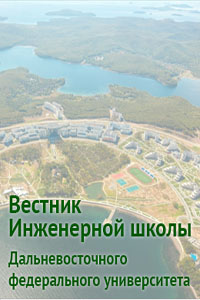The effect of reinforcing filler on the physico-mechanical characteristics of gas gypsum
DOI:
https://doi.org/10.24866/2227-6858/2025-3/98-105Keywords:
gas gypsum, building gypsum, fibrous additives, physico-mechanical properties, reinforcing filler, compressive strength, specific surface areaAbstract
Reinforcement of building products is usually used to increase the tensile strength of products during bending. When bending, the reinforcing effect depends on both the reinforcing material itself and the enveloping matrix material. Gypsum materials have a better ratio between the values of tensile and compressive strength than concrete, but the tensile strength is significantly less than that of compression. The authors investigated the effect of fiber additives on the physical and mechanical characteristics of the material (average density, strength and thermal conductivity). Basalt, polymer, and glass fibers were used as modifying fiber additives. For the experiments, fibrous materials were crushed to a specific surface area of 220–240 m2/kg. Introduction of dispersed fiber additives in the amount of 0.3–0.5% by weight. provides increased strength and reduced thermal conductivity of gas gypsum products. With the introduction of 0.4% glass fibers, gypsum products with the following properties are obtained: compressive strength – 2.5–3.7 MPa; average density – 865–985 kg/m3; thermal conductivity – 0.258–0.265 W/(m·°C).
References
1. Ухова Т.А. Способы повышения эффективности производства ячеистых бетонов // Строительные материалы. 1993. № 8. С. 4–6.
2. Берѐзкина Ю.В. Технологические особенности при производстве газогипса // Югорский институт развития строительного комплекса // Вестник БГТУ им. В.Г. Шухова. 2011. № 4. C. 11–14.
3. Завадская Л.В. Влияние микроармирующих добавок на свойства газогипса // Фундаментальные исследования. 2011. № 12. С. 770–772.
4. Хопренинова Т.Ю. Гипсонаполненные системы в сухих строительных смесях // Сухие строительные смеси. 2012. № 5. С. 26–29.
5. Tschernyschowa N.W., Lessowik W.S., Fischer H.B., Drebesgowa M.J. Gipshaltige kompositbin-demittel – zukunft des ökologischen bauens* // 19-te INTERNATIONALE BAUSTOFFTAGUNG IBAUSIL (Weimar, 16–18 сентября 2015 г.), Weimar: Institut fur Baustof-fkunde der Bauhaus-Universitat, 2015. С. 699–706.
6. Рязапов Р.Р., Мухаметрахимов Р.Х., Изотов В.С. Дисперсно-армированные строительные композиционные материалы на основе гипсового вяжущего // Известия КГАСУ. 2011. № 3. С. 145–149.
7. Халиуллин М.И., Алтыкис М.Г., Рахимов Р.З. Эффективные сухие гипсовые смеси с добавками полимерных волокон // Известия вузов. Строительство. 2004. № 3. С. 33–37.
8. Официальный сайт компании ООО «КНАУФ ГИПС» [Электронный ресурс]. URL: http://www.knauf.ru/ (дата обращения: 10.07.2016).
9. Мокрова М.В., Матвеева Л., Леонтьева Ю.В., Летенко Д., Черевко С. Модифицированный газогипс для тепло- и звукоизоляции инженерных сооружений // E3S Web of Conferences, 2023. No. 371. P. 02022. https://doi.org/10.1051/e3sconf/202337102022.
10. Завадская Л.В., Ильина Л.В., Бердов Г.И. Газогипсовые материалы, армированные волокнистыми добавками // Известия высших учебных заведений. Строительство. 2004. № 3. С. 33–37.
11. ГОСТ 23789-79 «Вяжущие гипсовые. Методы испытаний».
12. ГОСТ 7076-99 «Материалы и изделия строительные. Метод определения теплопроводности и термического сопротивления при стационарном тепловом режиме».
13. Buryanov А.F., Novichenkova Т.B., Petropavlovskaya V.B., Petropavlovskii K.S. Simulating the structure of gypsum composites using pulverized basalt waste // MATEC Web Conf. 2017. Vol. 117: RSP 2017 – XXVI R-S-P Seminar 2017 Theoretical Foundation of Civil Engineering. Art. 00026.
Downloads
Published
Issue
Section
License
Copyright (c) 2025 Far Eastern Federal University: School of Engineering Bulletin

This work is licensed under a Creative Commons Attribution 4.0 International License.

